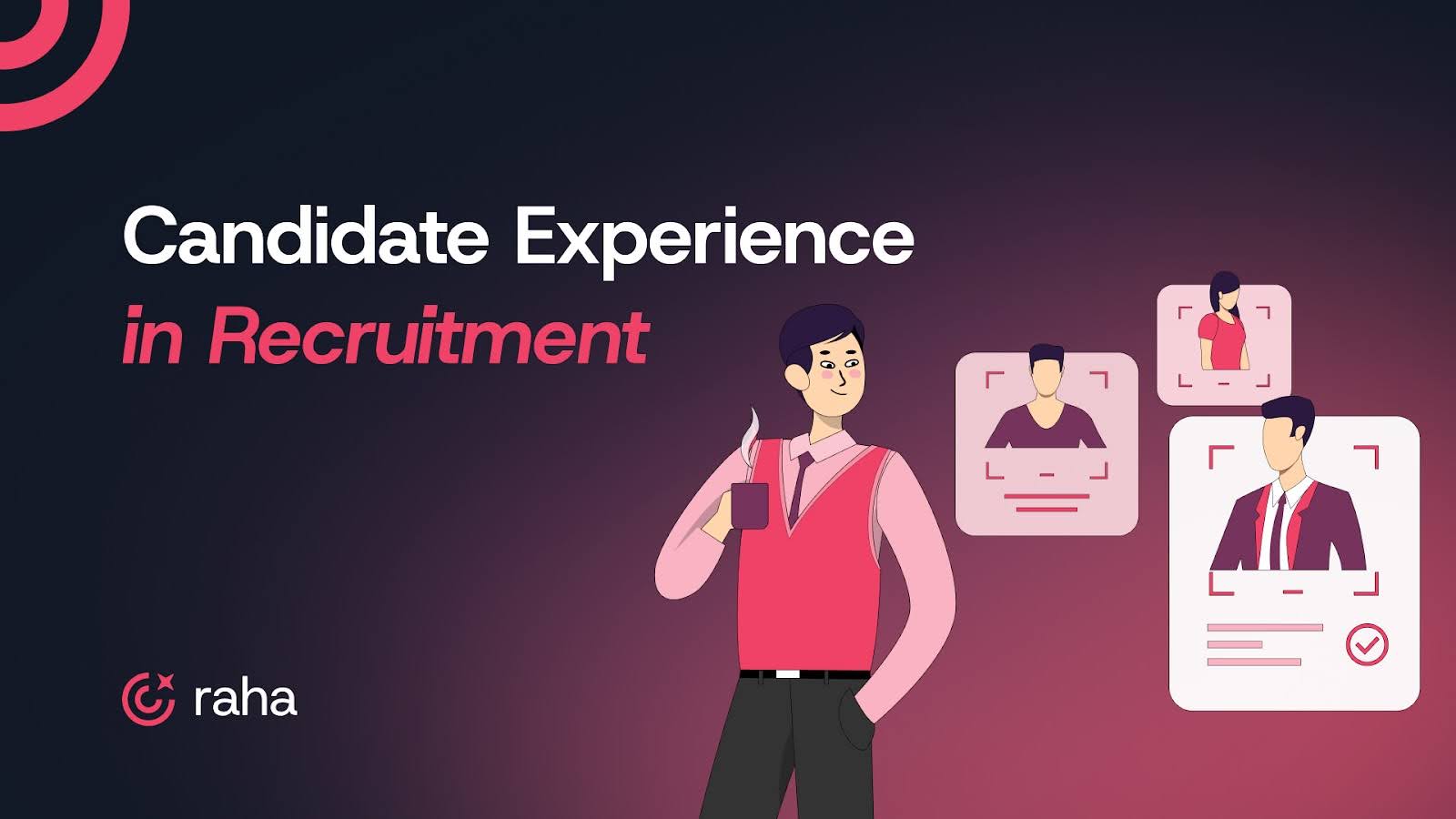
According to Gallup, two out of three new hires rated their candidate experience as very good or exceptional. The bar has risen. Candidate experience is no longer a differentiator; it’s the baseline.
And you already know this.
You’ve seen it in your own numbers: the drop-off rates between stages, offer acceptance, and hiring velocity.
This guide won’t tell you to “be more empathetic” or “write nicer rejection emails.” You’ve heard that before.
We’re going to walk through what it really takes to build a consistent, candidate-first hiring process — one that works at scale, holds up under pressure, and doesn’t waste your time.
What Is Candidate Experience and Why Does It Matter?
If you’ve been in recruiting long enough, you know how much candidate experience shapes your pipeline.
It includes more than just career pages or polished rejection emails. It’s that feeling a candidate walks away with after dealing with your process:
- Did they feel respected?
- Did they know what was coming next?
- Did interviews get scheduled quickly?
- Did follow-ups actually happen?
Candidates notice all of it.
The goal isn’t perfection. What matters is a process that runs consistently and reliably.
When the basics fall through, such as delayed feedback, missed interviews, or vague next steps, good candidates lose interest. But when your recruitment process is tight and consistent, everything works better. Candidates stay engaged. Hiring managers stay aligned. Offers close faster.
Getting the fundamentals right doesn’t just improve the experience. It makes hiring more predictable, more effective, and far less stressful.
Designing a Candidate Experience That Actually Works
Most candidate experiences break for two reasons: clunky processes and radio silence. Often both. It’s not about intent. it’s about systems that can’t keep up. Handoffs get sloppy. Ownership gets blurred. And good candidates slip through.
Here’s how to build an experience that scales, moves fast, and signals competence at every step.
Stage 1: Pre-Application and Application Experience
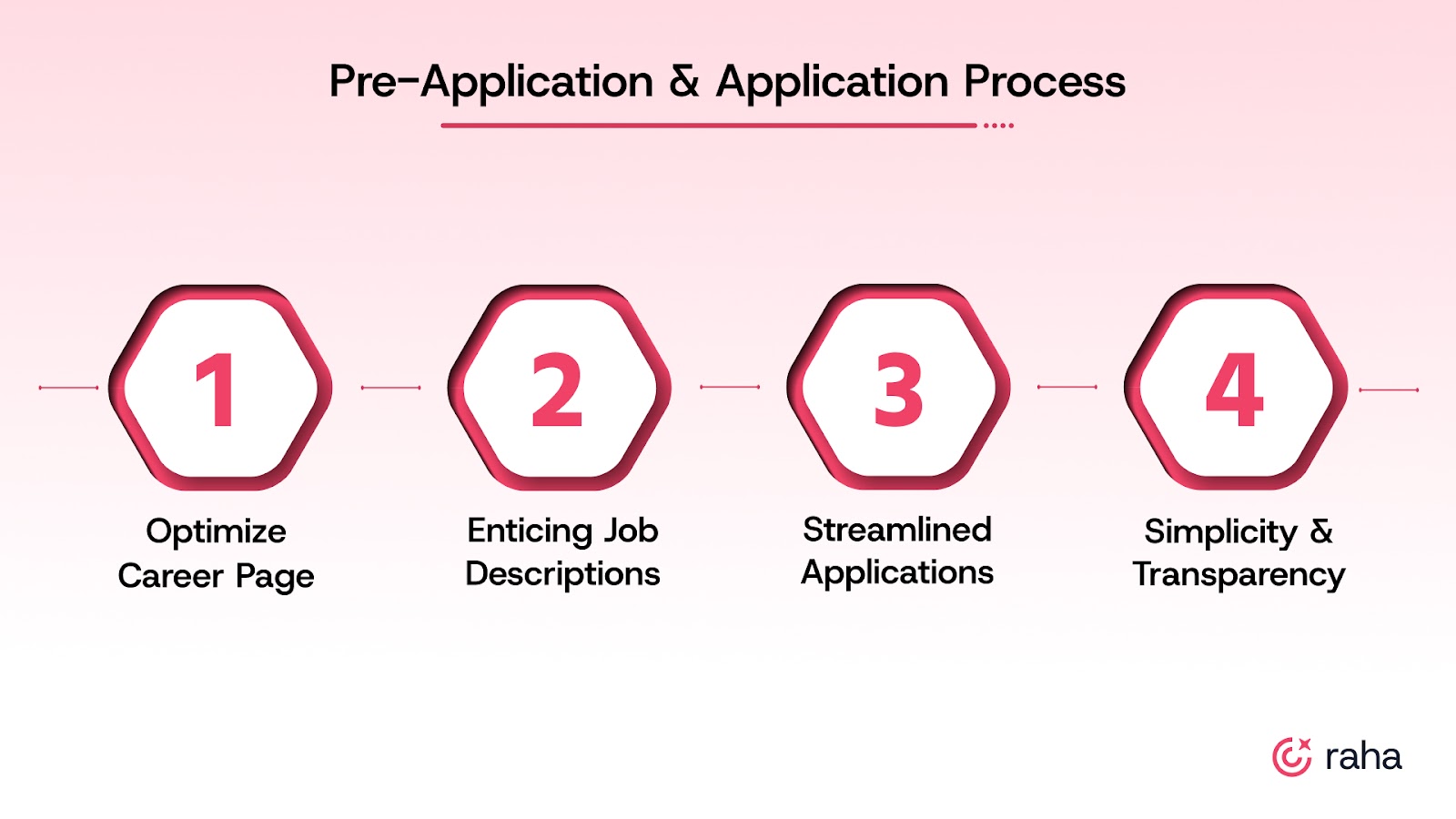
Before anyone clicks apply, they’ve already made up their mind about your company. They've scanned your career page, browsed your social profiles, and formed a first impression.
Let’s fix what candidates see first.
A. Audit Your Career Page and Social Presence Like a Funnel Owner
Your career site is a conversion asset, and if it’s not converting, you’ve got a sourcing problem. Start by tracking:
- Page-to-application conversion rate: How many visitors actually start an application?
- Mobile vs. desktop behavior: Are mobile users bouncing more?
- Top exit pages: Where are people dropping off?
What to look for:
- Is it easy to find open roles?
- Do your job posts load quickly and read clearly on mobile?
- Are you showcasing actual people and culture, or generic stock content?
- Are tracking tools like Google Analytics or heatmaps set up to flag friction points?
Also, check your social channels. Candidate research doesn’t stop at your site. If your LinkedIn feed is silent, and your Glassdoor profile feels unmanaged, that’s a silent filter driving quality candidates away.
B. Treat Job Descriptions Like Conversion Tools
If you’ve ever tracked click-to-apply ratios, you’ve seen how quickly a boring or bloated JD can kill interest. Write for clarity and intent:
- Be explicit about scope: What does success look like in 30/60/90 days?
- Include salary if possible: Transparency leads to a stronger pipeline fit.
- Focus on must-haves: Overloading job descriptions with “nice-to-haves” can push qualified candidates away before they even apply.
What to look for:
Track JD view-to-apply conversion rates in your ATS or analytics tool. If a high-traffic role isn't converting, the JD is likely the blocker.

C. Fix the Application Experience Before You Buy Another Sourcing Tool
You don’t need more applicants; you need more completions from the right ones. If your application form takes more than 5 minutes or isn't optimized for mobile, you’re bleeding top talent. Simplify ruthlessly:
- Only ask for what you screen against.
- Enable autofill, resume uploads, or “Apply with LinkedIn.”
- Ditch forced account creation unless it’s necessary.
What to look for:
- Start-to-completion rate: How many people start but don’t finish the application?
- Drop-off questions: Where are candidates giving up?
D. Set Process Expectations Early, and Track Candidate Drop-Off
One of the most underrated fixes is telling candidates what the process looks like before they apply. This sets the tone and reduces the likelihood of ghosting later. Add a “What to Expect” section to your JD or careers page:
- Number of stages
- Timeline from application to offer
- Who they’ll meet along the way
This helps build psychological safety. Candidates are more likely to finish the process if they know what's coming. It also reduces fallout after stage 1 when expectations don’t match reality.
What to look for:
- Stage-to-stage conversion rate (Application → Screen, Screen → Interview)
- Time-in-stage for each funnel step
- Drop-offs before first touch (if high, candidates are likely confused or frustrated with timelines)
Also read: What Is Talent Acquisition? Strategies for Stronger, Smarter Hiring
Stage 2: Screening and Assessment Experience
Once candidates enter your funnel, your screening process determines two things: how fast you move and how well you identify fit. When done right, this stage improves your time-to-respond, boosts pass-through rates, and saves hours of recruiter bandwidth every week.
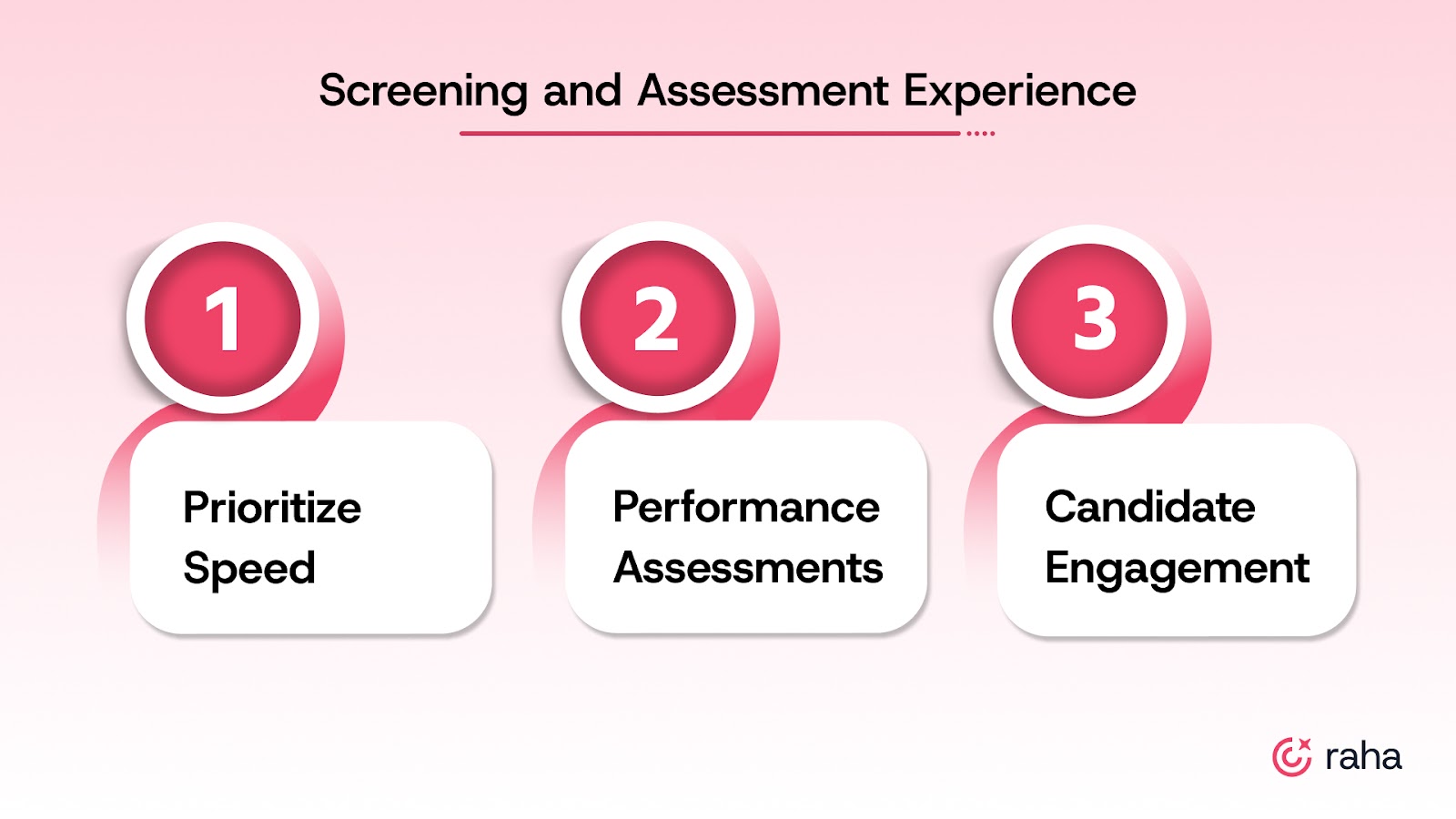
A. Prioritize Speed Without Sacrificing Fit
What to fix: Slow, manual screening processes that miss qualified candidates.
Why it matters: Screening time is directly tied to pass-through rate and recruiter bandwidth.
How Raha AI helps:
Use AI screening tools like Raha’s AI Resume Screener to parse applicant resumes 10x faster. It pulls key data points into a structured format and auto-scores candidates based on job relevance. You can also apply filters instantly and shortlist in minutes.
B. Design Assessments That Predict Performance
What to fix: Long, vague, or inconsistent assessments that burn time without improving decisions.
Why it matters: High drop-off = bad candidate experience and wasted effort.
Tactics that work:
- Keep take-homes under 90 minutes unless paid.
- Use structured rubrics tied to the role’s success metrics.
- Review feedback consistency. For instance, if two reviewers score wildly differently, your rubric needs work.
C. Keep Candidates Engaged Between Stages
What to fix: Radio silence post-application that causes disengagement.
Why it matters: Candidates assume no update = no interest.
Tactics that work:
- Use automated email sequences to confirm application, share timelines, and preview next steps.
- Assign recruiter ownership per stage to avoid gaps.
- Add nudges: “You’re still in the process” updates reduce ghosting.
Stage 3: Interview and Feedback Experience
This is where your process either builds conviction or loses the candidate entirely. It’s not about smiling through Zoom calls. It’s about clarity, structure, and a real hiring signal.
Here’s how to run an interview experience that gets results.
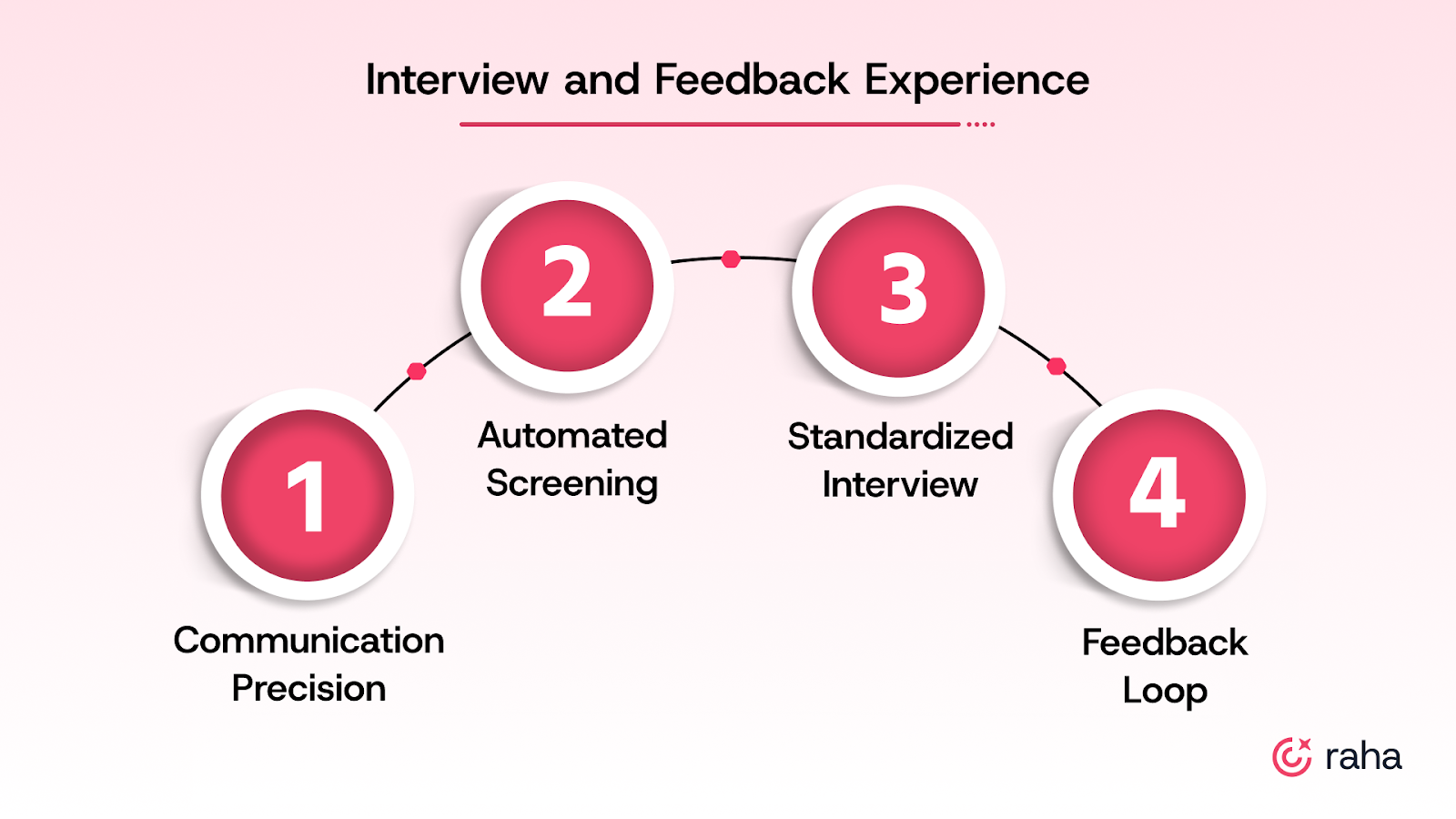
A. Communicate with Precision Before, During, and After Interviews
Interview logistics are one of the biggest hidden time drains for TA teams. If you're still manually emailing availability or rescheduling by hand, you're not operating at scale.
To do this right:
- Send clear interview briefs outlining who the candidate will meet, what topics each person will cover, and how long each round lasts.
- Use email templates for consistency.
- Set SLAs for follow-ups within 48 hours, and flag anything that takes over 3 days.
How Raha AI helps:
Raha’s AI Interview Coordinator automates the entire interview scheduling process. Once the recruiter selects the candidate and role, Raha handles all outreach — syncing with calendars, collecting time slots, resolving conflicts, and even managing reschedules without RC intervention. It integrates directly with your ATS, email, and calendar tools.
B. Automate the First-Round Fit Check to Save Time
You're probably spending 15–20 hours a week on first-round screens that follow the same playbook. They're necessary, but they don’t need to be manual.
How Raha AI helps:
Raha’s AI Interviewer conducts these 10–15 minute screening calls automatically. It calls candidates, runs a predefined or JD-driven set of questions, and returns a structured report. This can help you assess fit faster and focus energy where it matters most.
C. Standardize Your Interview Process to Reduce Noise
High-performing teams rely on structured interviews because they reduce unconscious bias and surface clearer signals.
To do this right:
- Use role-specific scorecards and clearly defined success criteria.
- Align interviewers on calibration. Everyone should know what a “strong yes” means for the role.
- Assemble cross-functional panels when needed.
- Run debriefs within 24 hours. If feedback lags, decision quality drops.
You can use interviewer alignment scorecards. Here’s a sample scorecard:
Tip: Track average score variance across interviewers. If variance exceeds 1.5 points on a 5-point scale, it's time for a calibration session.
D. Close the Loop with Feedback, and Use It to Improve
Candidate feedback helps refine your entire recruitment process. Send a 2-question feedback survey post-interview. Ask:
- “How clear was the process from start to finish?”
- “Is there anything we could have done better?”
As a recruiter, you can also offer feedback when it adds value, especially post-on-site or in the final round. Even a brief summary of strengths and gaps signals professionalism.

Stage 4: Offer and Decision Experience
This is the moment when every part of your process comes to a head. The offer stage is not just about compensation. It's where speed, clarity, and brand alignment determine whether your investment in the candidate pays off.
A. Move Quickly From Decision to Offer Letter
Delay is one of the top reasons offers fall through. Here’s what you can do:
- Track the offer turnaround time. Aim to deliver offers within 24 hours of a final interview.
- Prepare compensation ranges, templates, and approval processes in advance to avoid internal delays.
- Empower recruiters to communicate offer details and handle decisions within predefined bands.
If your offer acceptance rate is below 70%, investigate timing issues and alignment gaps. High-performing teams often exceed 80%.
B. Present a Full Picture — Not Just a Number
Candidates want to understand the full picture: benefits, role scope, career path, flexibility, and values.
- Present a clear compensation summary, including salary, bonus, equity, and perks.
- Be ready to answer questions about growth opportunities, team structure, and performance metrics.
- Equip recruiters and hiring managers to articulate the company’s value proposition clearly and consistently.
Candidates who feel informed and confident in the offer are more likely to accept quickly and start strong.
Also read: What is Candidate Relationship Management? Key Steps, Challenges
Stage 5: Onboarding New Hires
A strong onboarding experience reduces early attrition, speeds up time-to-productivity, and reinforces your employer brand. Use this checklist to build a seamless, high-retention onboarding journey.
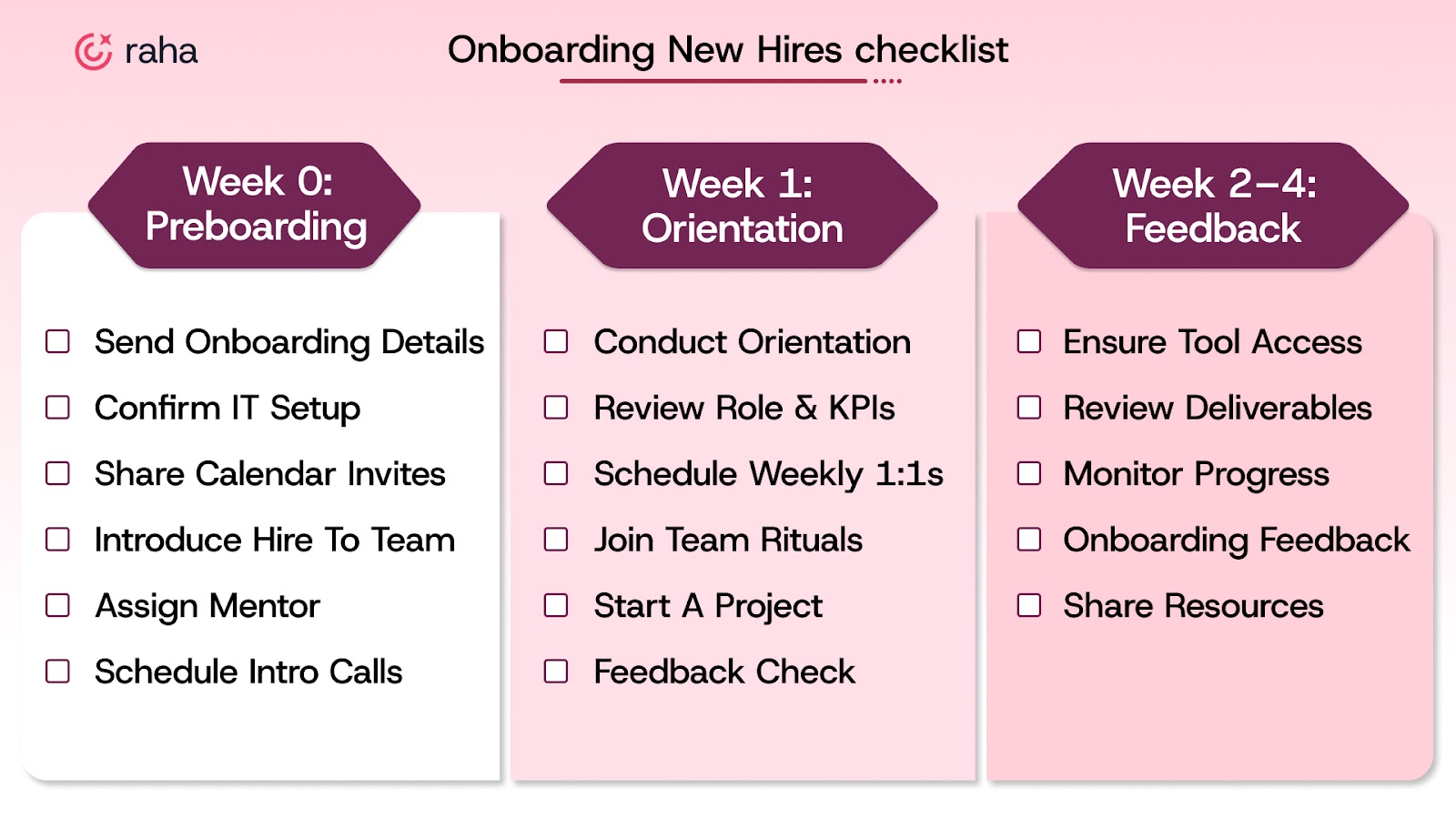
Strong onboarding shortens ramp time, increases retention, and reinforces your employer brand from the very start. The first 30–60 days are your window to build alignment, trust, and momentum.
If You’re Ready to Fix the Bottlenecks, Start Here.
Most candidate experience problems aren’t hard to spot; they’re just hard to fix without support.
That’s where Raha AI comes in.
We help recruiting teams move faster by:
- Scanning resumes and surfacing top candidates.
- Running first-round phone screens.
- Coordinating interviews without the back-and-forth.
Less manual work. More qualified movement.

